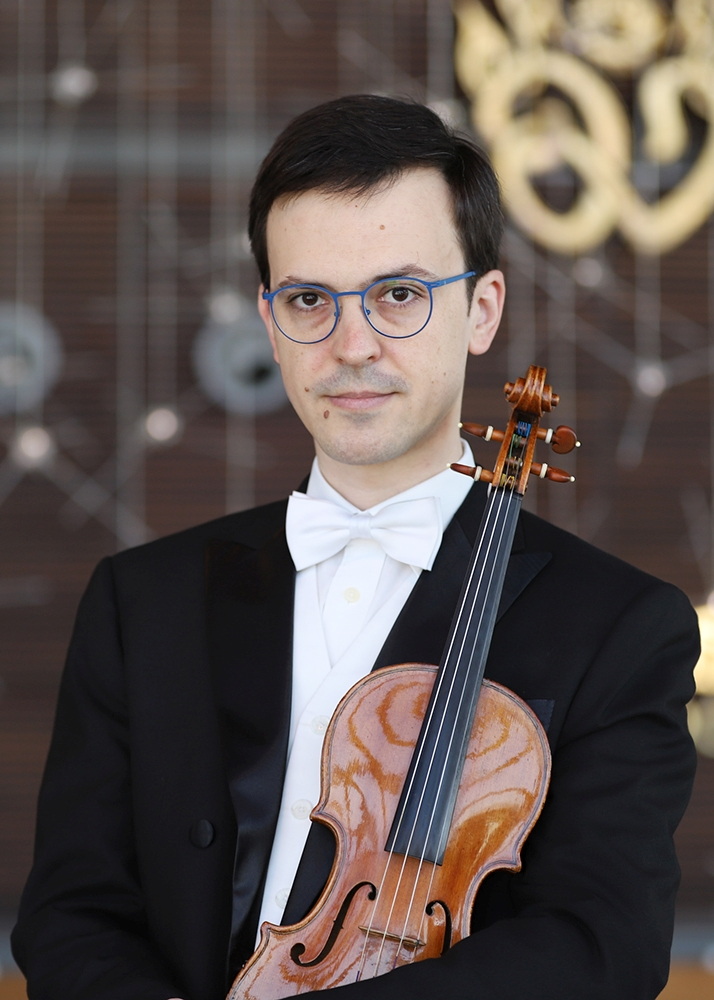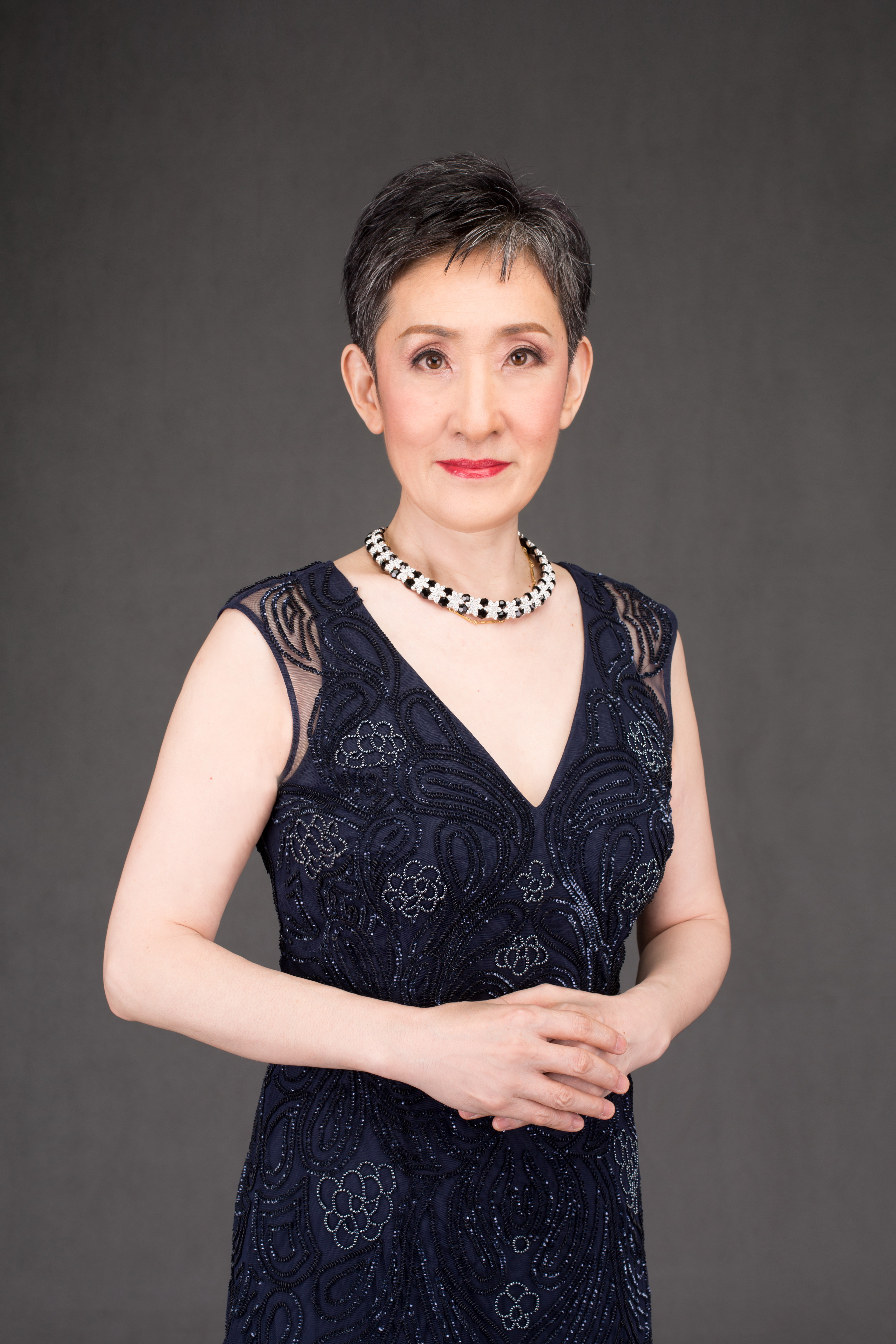Mozart: Violin Sonata in G major, KV. 301 (1778)
The KV 301 Sonata was written in early 1778 when Mozart was in Mannheim with his mother. It is a two-movement work, typically intended for playing in a household setting, where the violin part could also be played by the flute. This sonata is a definite departure from Mozart's earlier sonatas for keyboard and violin, which clearly favored the fortepiano or the cembalo. Here it becomes apparent that the instruments are no longer interchangeable and are, for the most part, equal. The first movement (Allegro con spirito) opens with a delicate yet joyous melody played by the violin. The piano and the violin exchange the dominating lines for the majority of the movement except when both instruments occasionally double each other. The keyboard takes the opening theme in the second movement (Allegro). The mood is dance-like and a gracious charm prevails throughout. The middle-section, in minor mode, offers a starker atmosphere in the form of a Sicilienne. Somber and nostalgic yet ever so graceful, this middle section is the core of the work.
From Notes © 2011 by Midori, OFFICE GOTO Co. Ltd.
Brahms: Sonata No. 1 in G major, Op. 78 for Piano and Violin (1878-79)
Brahms composed the G major sonata shortly after the untimely death of his 24-year-old godson, Felix Schumann. Although it reflects Brahms's sadness, the overall effect of the work could be described as tender rather than sad. This Sonata is a three-movement work containing fragmentary references in the first and last movements to two of Brahms's earlier songs, Regenlied and Nachklang op.59, No. 3 and 4, respectively, of 1873. Set to poems by his friend Klaus Groth, they incorporate rain in a symbolic and poetic manner. In the first poem, the rain awakens dreams of childhood, and would "bedew my soul with innocent childish awe" and in the second, raindrops and tears mingle, so that when the sun shines again, "the grass is doubly green: doubly on my cheeks glow my burning tears." In the first movement, the violin has the main theme, with the memorable repeated “D”s in a dotted rhythm, which begin the melody. The middle part of the second movement, marked Adagio, is distinguished by the somber quality of a funeral march, in great contrast to the heart-warming sections that precede and follow it. In the final movement, the three “D”s make an appearance again. With the melody that begins with the dotted rhythm, one hears the accompaniment of quiet running 16th notes, from which the Romantic imagination evokes a gentle flow of water, perhaps of rain or tears. Later a theme from the second movement returns, suggesting hopefulness, and eventually leading to the triumphant sounds of happiness. The opening melody is heard again, after which the work comes to a quiet end, with a tender reminiscence of the past.
From Notes © 2003 by Midori, OFFICE GOTO Co. Ltd.
Grieg: Violin Sonata No. 3 in C minor, Op. 45 (1886-87)
Grieg’s chamber music output is small–only six works, of which three are violin sonatas and one an incomplete string quartet. The 3rd Sonata by Grieg was completed in 1887. Grieg, playing the piano, premiered it with Adolf Brodsky the same year in Leipzig. It is a three-movement work in which folk elements can be felt in the melodies and rhythmic patterns, but the harmonies remain in the traditional and Romantic-era style. The first movement opens heroically and boldly. Melodies and themes appear to be flowing from one to the next, following no particular compositional form. The opening theme, however, appears in a few disguised or masked versions throughout the movement. In the second movement, the first and last sections are almost identical and in the middle is the Morris Dance, which was a pantomime-like dance popular during the Renaissance. In contrast to the violin-dominated first movement, the second movement opens with a lyrical piano solo all the more eloquent for its solitary quality. The highly energetic final movement has a middle slow section, that is grand and melodious, in contrast to the vibrant, fast-moving first section. The rather short slow section is uninhibited and the romantic air is unstoppable. It is even more so the second time the section is heard, close to the end of the work. This time the piano has consistent running notes, giving the Cantabile added propulsion. This leads to the near-frantic Coda, marked Prestissimo. The work ends in a blaze of excitement.
From Notes © 2003 by Midori, OFFICE GOTO Co. Ltd.
PERFORMERS BIOGRAPHY

Omiros Yavroumis, violin
Omiros Yavroumis graduated in 2002 from the Royal Academy of Music in London, with the Bachelor’s and Master’s Degrees, under Professor Mateja Marinkovic. He has also attended master classes and taken violin lessons with Yehudi Menuhin, Maxim Vengerov, Ruggiero Ricci, Zakhar Bron, Leonidas Kavakos, Ivry Gitlis, etc., and has won numerous awards in solo and chamber music competitions, both in Greece and abroad. He has appeared as soloist with the Thailand Philharmonic Orchestra, the Jelenia Gora Philharmonic, the Filharmonia Dolnoslaska, the State Orchestra of Athens, the City of Thessaloniki Symphony Orchestra, the City of Athens Symphony Orchestra, etc. He has also appeared as soloist and has taken part in chamber music groups and orchestras in many countries (USA, Australia, United Kingdom, Germany, Austria, France and Italy), under famous conductors such as Sir Colin Davies, Sir Charles Mackerras, Esa-Pekka Salonen, Naeme Yarvi, Kent Nagano, Michael Tilson Thomas etc., in venues including the Sydney Opera House, Royal Festival Hall and Royal Opera House in London, Grosses Festspielhaus in Salzburg etc. Since 2002, Omiros is Concertmaster of the City of Thessaloniki Symphony Orchestra in Greece and in 2008 he was appointed violin professor at the State Conservatory of Thessaloniki. Pupils of Omiros Yavroumis have won prizes in national and international competitions and gained places at European and American Music Academies. Since December 2016 Omiros has been the Concertmaster of the Thailand Philharmonic Orchestra and violin professor at the College of Music in Mahidol University.

Eri Nakagawa, piano
Eri Nakagawa, a native of Osaka, Japan, has been on the piano faculty of College of Music, Mahidol University in Thailand since 1995. Prior to her appointment at Mahidol, she was Assistant Professor of Music Performance at Ball State University, Indiana, USA. She has been invited as a guest pianist and professor at the University of Northern Colorado in USA, Bruckner Conservatory in Linz, Bösendorfer Saal in Vienna, Yong Siew Toh Conservatory of Music in Singapore, Corfu Festival in Greece, Western Australian Academy of Performing Arts in Perth, Moulin d’Andé International Masterclasses in Normandy, France, Piano Plus Festival in Corfu, Greece, UCSI University in Kuala Lumpur, Beijing China Conservatory, Northwest Minzu University in Lanzhou, NanJing Xiaozhuang University, Zhejiang Conservatory of Music in Hangzhou, Sicily International Piano Festival, etc. Besides giving frequent recitals, she has performed more than ten concertos with numerous orchestras. She also enjoys working as a collaborative pianist and accompanist with distinguished musicians in Thailand and abroad. She graduated from Osaka Kyoiku University and continued postgraduate studies at Mukogawa Women’s University in Japan. She completed her Master's and Doctoral degrees in piano performance at Ball State University. Among her principal teachers were Koji Tanaka, Naoyuki Inoue, Mitchell Andrews, and Pia Sebastiani.